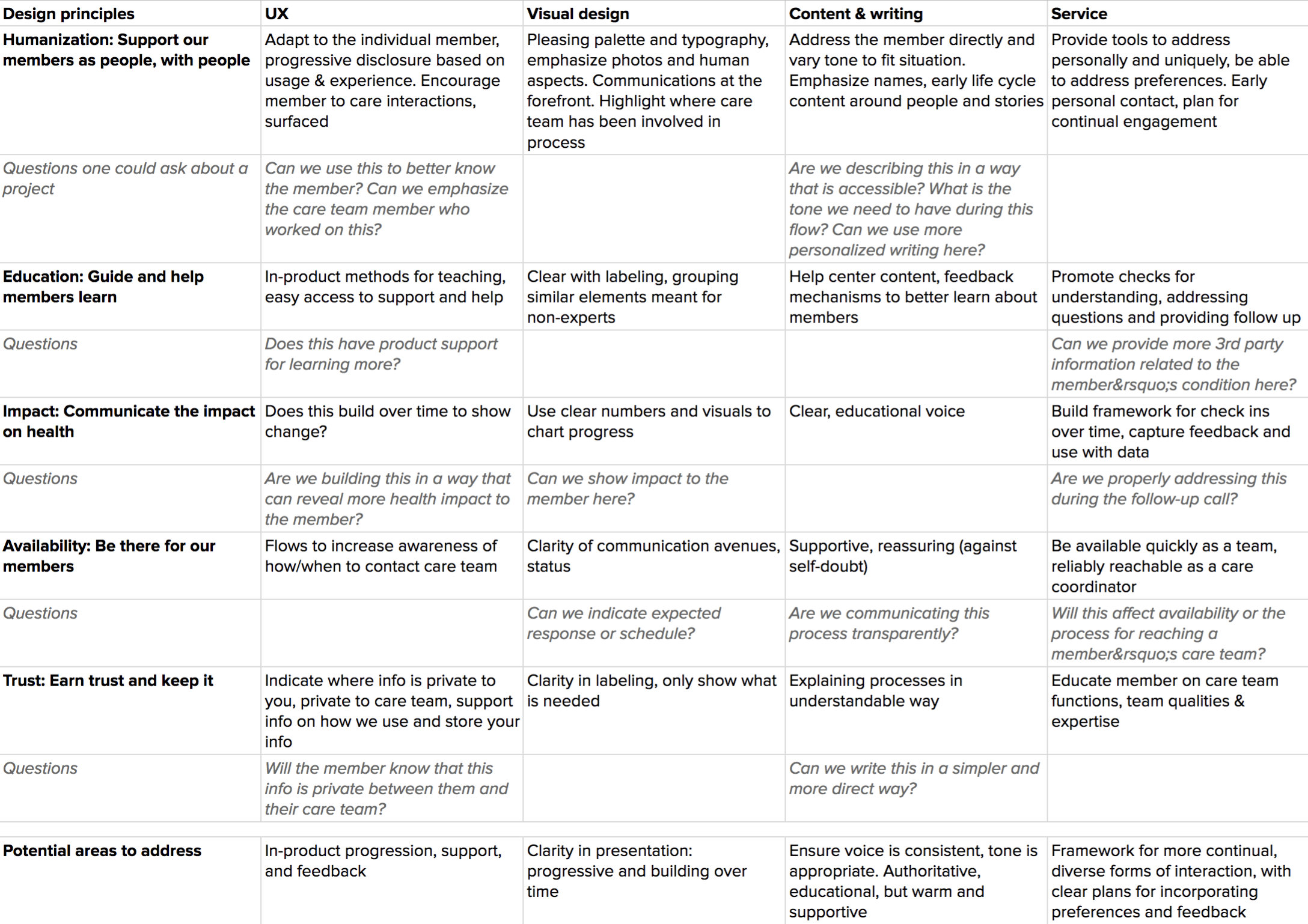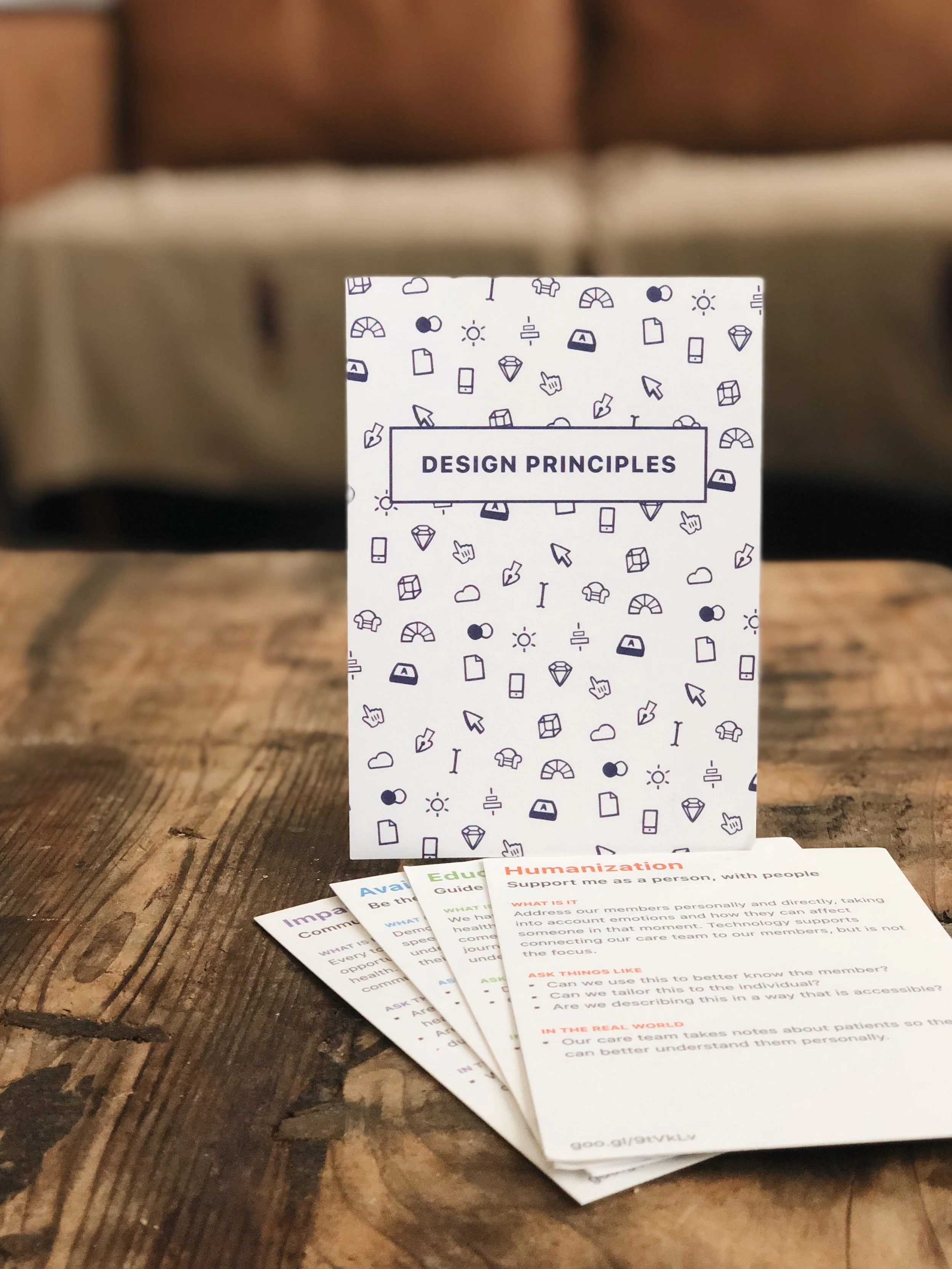Process
Background
The decision to undertake the work of crafting design principles was to accomplish several things: to improve the speed with which we could make design decisions, to make those decisions in a repeatable manner, and to communicate those decisions in terms that other teams within the company could understand. At the time, the design team was acting on experience in an individualized way, which allowed for greater time spent on individual projects in the short term. Unfortunately, it also diminished the work in the long term as we struggled to understand past decisions when faced with similar work. It also made persuading the organization with our work more difficult, as individual designers were behind decisions rather than the team as a whole. So we set out to improve that.
Phase I: Research
As with most projects, many great teams have faced these challenges before. I went about researching how other teams approached creating principles for their design teams, and what those processes and outputs looked like. Thankfully, I was in luck. In addition to sets of design principles themselves, I gained insight into how we might go about determining our own.
“Design principles articulate the fundamental goals that all decisions can be measured against and thereby keep the pieces of a project moving toward an integrated whole.”
Thanks to Stephanie Hornung, JD Vogt, Wouter de Bres, Ste Grainer, Julie Zhuo, and Luke Wroblewski for their posts, and companies like Facebook, Asana, Material Design at Google, Atlassian, the British Government’s Digital Services. They help set us on a path to achieving actionable principles, which was just as important as defining the principles themselves.
Phase II: Workshops
In order to go from nothing to something, I put the design and product teams through several workshops. I included the product team as our closest partners, and we went through the same workshops in order to obtain a direct comparison for how our teams looked at our product work. We ended up with a set of common themes, shared by both product and design. Below is a few slides from the workshop template.

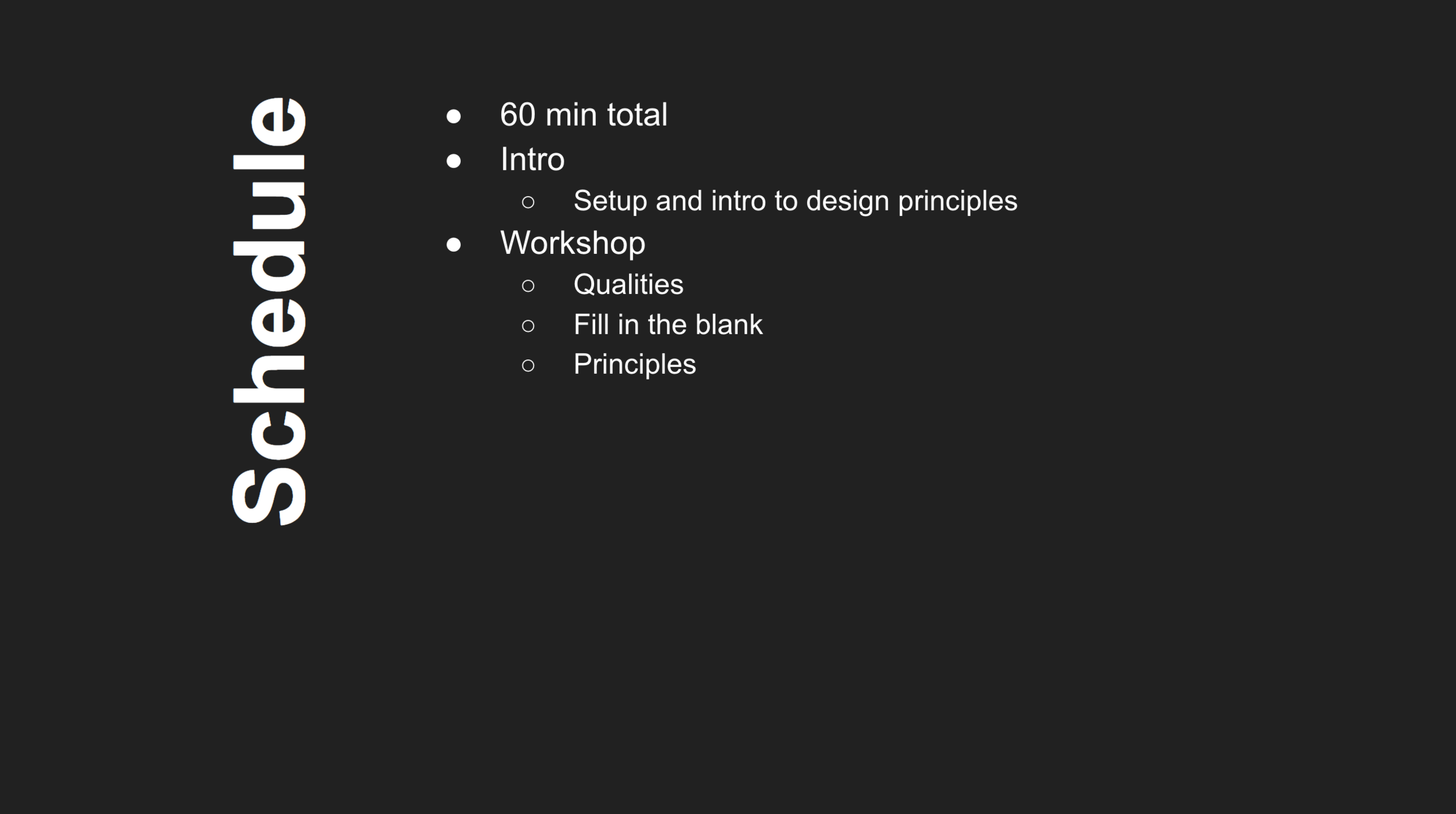
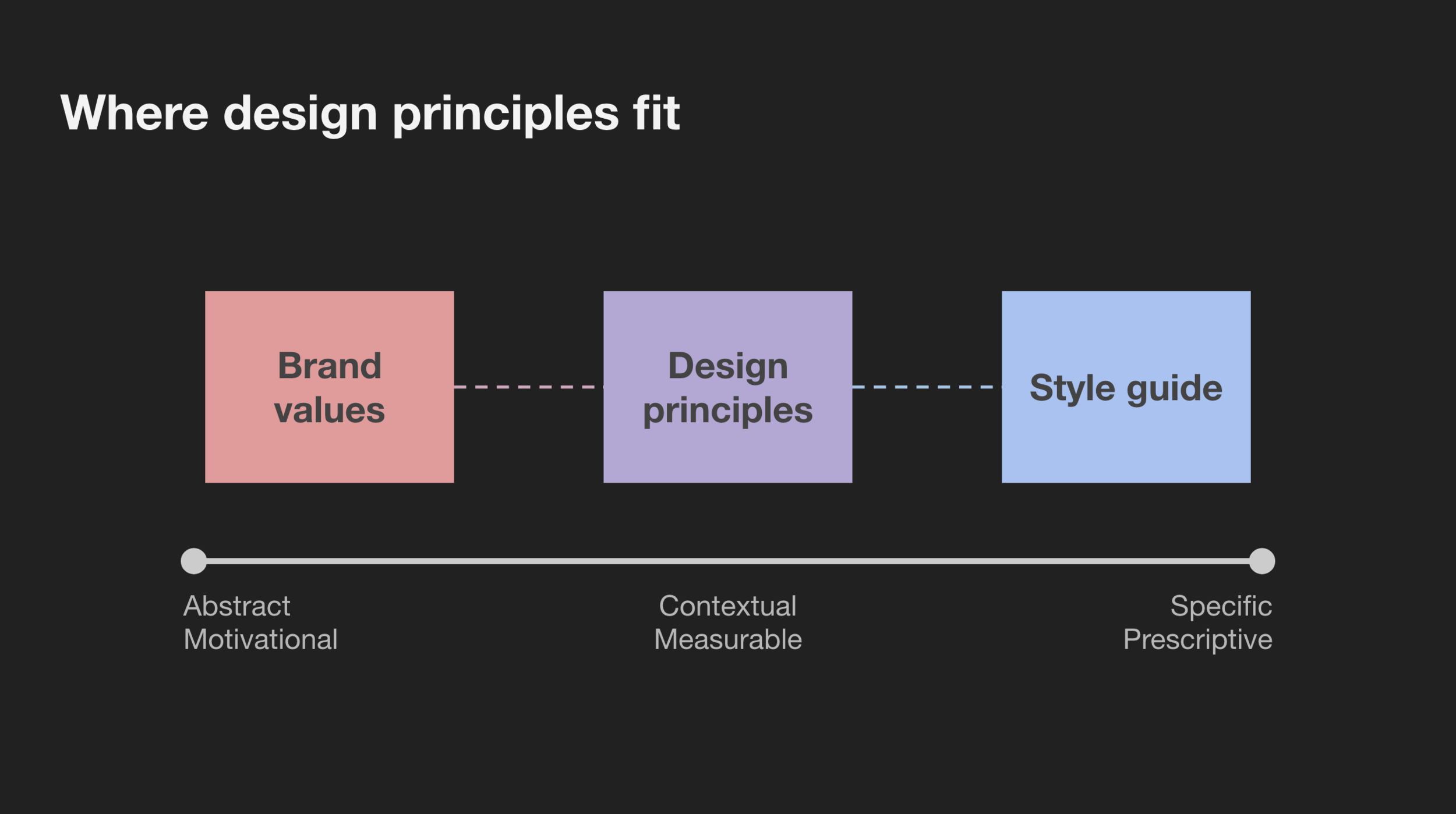
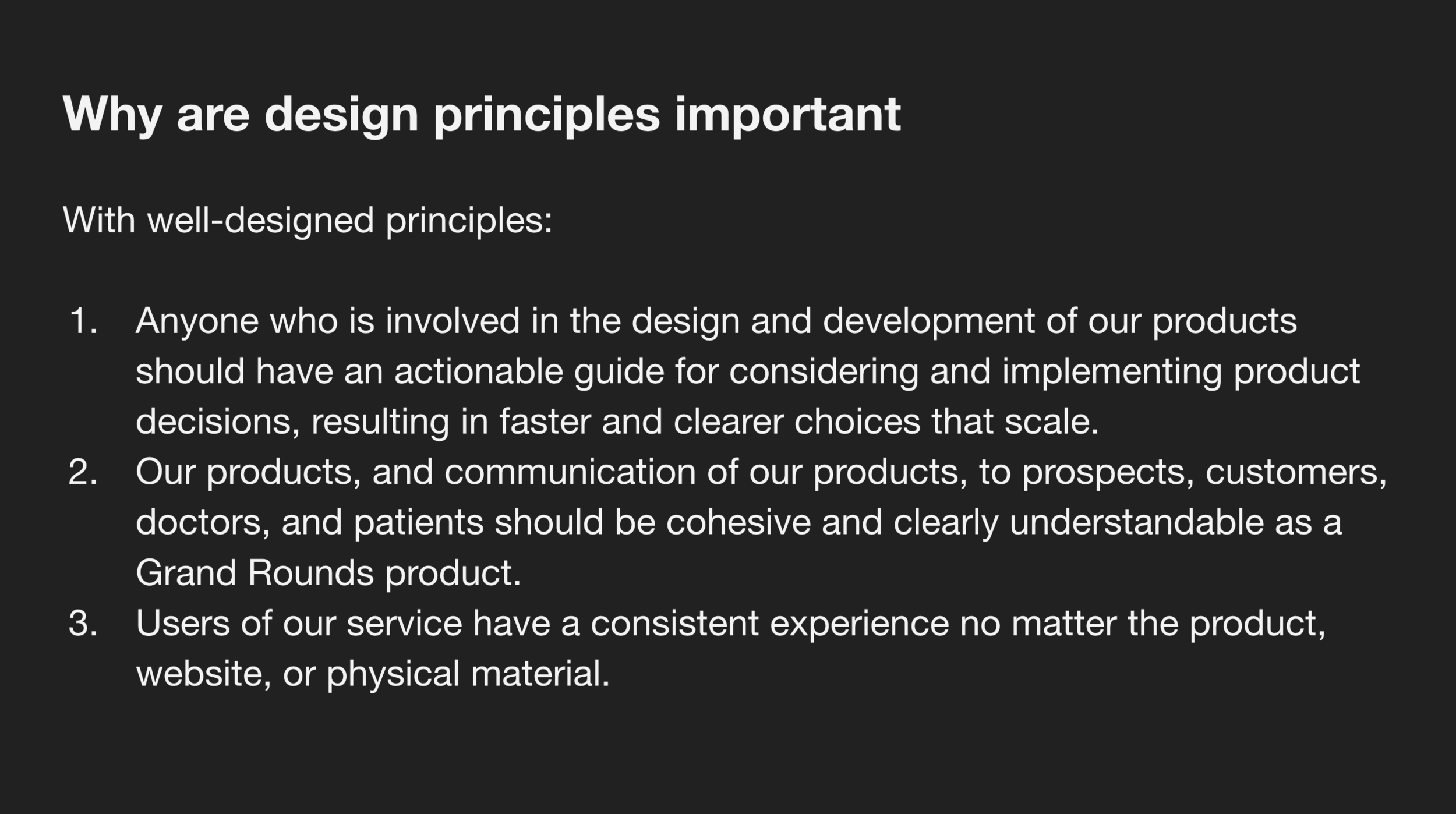
Phase III: Synthesis
After aggregating all of the data from the workshop sessions, I consolidated into a set of working principles. The true test was to create a rubric that would enable us to create a clear framework for our design work. I worked with the design team to gather real world examples of how we might use our principles, according to our specific work at Grand Rounds.
DP rubric
Our deeper framework for assessing design work
Phase IV: Socialization and practice
Having a set of design principles that the team believed in was great, but the next step was to socialize with the larger organization and put them to use. In addition to a series of presentations to various groups, including the company, a few resources were created.
DP internal site
Being on the Google Business platform, I created an internal site for all employees to reference. It included the principles, rubric, usage suggestions, and background information.
DP cards
Part of the socialization of our design principles was to print cards and place them throughout the office. I wanted a tactile reminder of what we stand for, and clear examples on hand for discussions.

